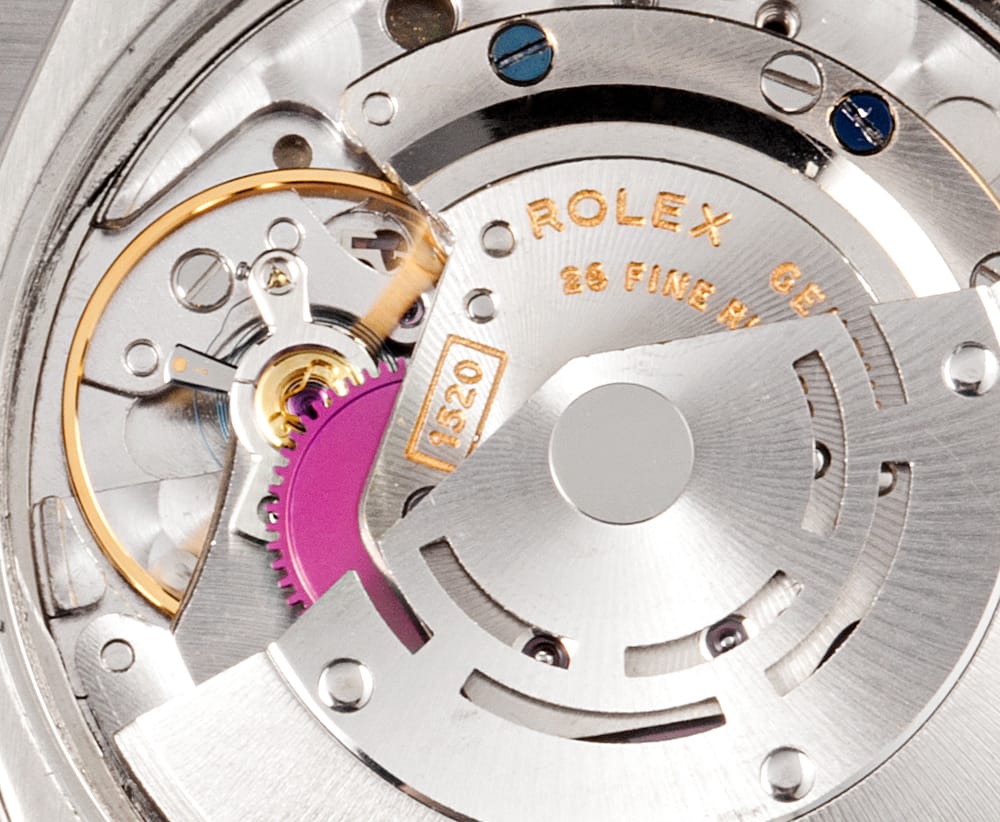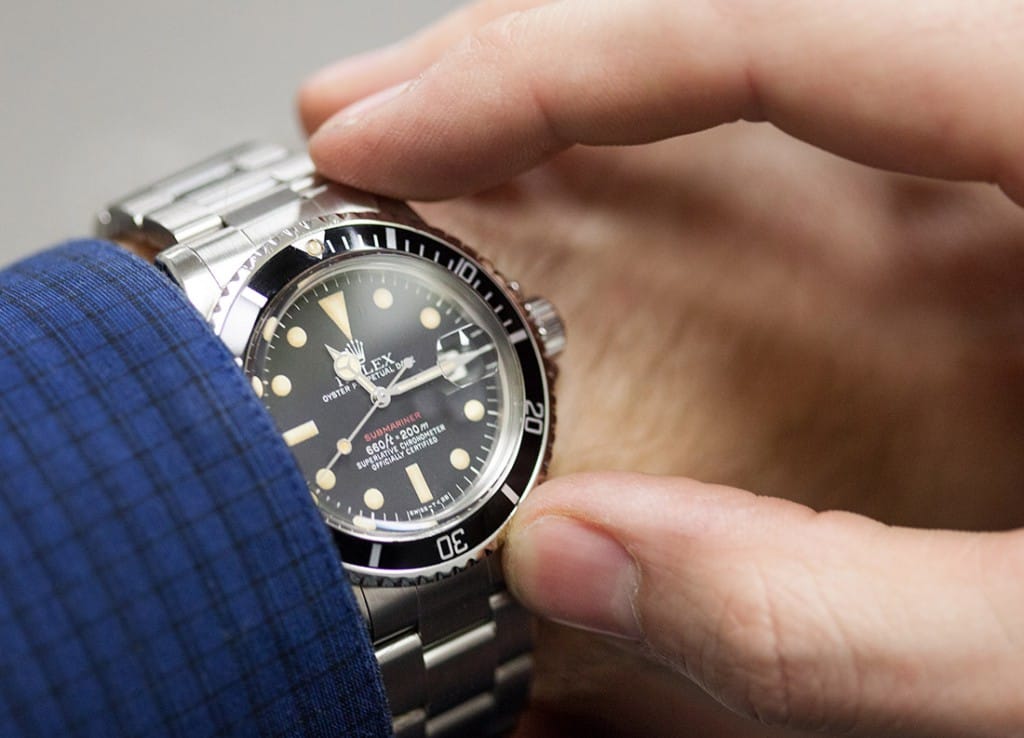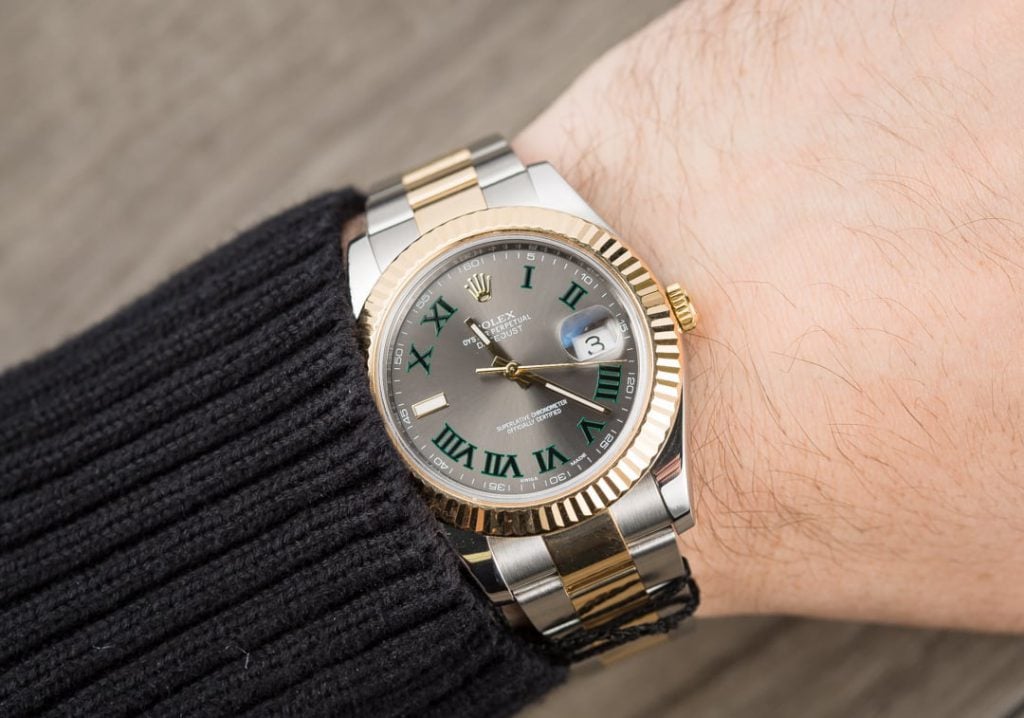Why Did My Rolex Stop Working? A Complete Troubleshooting Guide
When your Rolex watch stops working, the most common cause is a depleted power reserve, which accounts for over 90% of cases and can be fixed at home in 2 minutes with a simple manual wind. This comprehensive guide covers the step-by-step troubleshooting process, starting with the easiest solutions before progressing to issues that require professional service, ensuring you can quickly diagnose and resolve why your precision Swiss timepiece has stopped ticking.
The Core Reason: The Power Reserve Has Run Out

Your Rolex features an automatic “Perpetual” movement that’s powered by the natural motion of your wrist. As you move throughout the day, a rotor inside the watch winds the mainspring, storing energy to keep the watch running.
This stored energy is called the “power reserve,” which typically lasts 48-72 hours, depending on your specific model. When a watch sits stationary for longer than its power reserve capacity, it will naturally stop running.
Your Step-by-Step Guide to Winding Your Rolex

The very first step in troubleshooting a stopped Rolex is to ensure it has enough power. Here’s a quick guide to giving it a full manual wind:
- Check and Unscrew the Crown: Locate the crown on the side of your watch case. Rolex uses either a Twinlock or Triplock screw-down crown system for water resistance. Turn the crown counter-clockwise until it pops out to Position 1 (the winding position). Crucially, an improperly screwed-down crown can interrupt function or lead to damage.
- Wind the Watch: Turn the crown clockwise for 30-40 rotations. You should feel slight resistance as you wind, and the crown will turn smoothly without clicking.
- A Note on “Overwinding:” Don’t worry about overwinding your Rolex. Modern Rolex movements include a safety clutch mechanism that prevents damage from excessive winding.
- Set the Time and Date (If Necessary) If your watch has been stopped for a while, you’ll need to reset the time and date. Pull the crown out to Position 2 for date setting, or Position 3 for time setting.
- Important – Screw the Crown Back Down: Push the crown firmly against the case and turn it clockwise until it’s tight against the case. This ensures your watch maintains its water resistance rating.
If you have fully wound your watch and it still stops working, don’t worry. This simply means we need to look a bit deeper. The following checklist will help you troubleshoot other potential causes.
For more detailed winding instructions, see our complete guide: How to Wind a Rolex
How to Troubleshoot a Rolex That Still Won’t Run

This section is for users whose watch stopped again after a full wind. Work through these steps systematically:
- Observe the Watch for 24-48 Hours: After a full manual wind, wear the watch consistently. Does it stop while on your wrist? Does it stop overnight? This observation helps diagnose whether the self-winding mechanism is functioning properly.
- Consider Recent Impacts: Did you drop or knock the watch recently? A hard shock can damage the delicate internal balance staff, causing the watch to stop or run erratically.
- Consider Magnetic Interference: Have you been near strong magnets such as speakers, tablet cases with magnetic closures, or MRI machines? Magnetism can cause the hairspring to stick together, making the watch run erratically or stop completely.
- Check for Visible Signs of Damage or Water Ingress: Examine your watch carefully. Look for condensation under the crystal, which indicates that water resistance has been compromised and moisture has entered the case.
Quick Diagnostic Table: What’s Wrong With My Rolex?
| Symptom | Most Likely Cause | Solution | DIY or Professional? |
| Watch completely stopped | Power reserve depleted | Manual wind (30-40 turns) | DIY |
| Stops after 24-48 hours | Automatic winding mechanism issue | Professional diagnosis needed | Professional |
| Stops randomly during wear | Internal damage or magnetization | Professional service required | Professional |
| Irregular ticking/rattling | Damaged balance staff or loose parts | Immediate professional attention | Professional |
| Condensation under crystal | Water damage | Emergency professional service | Professional |
| Runs fast/slow consistently | Magnetization or regulation needed | Professional demagnetization/adjustment | Professional |
If you’ve gone through the troubleshooting checklist and your watch is still having issues, it’s a clear sign that the problem is internal and requires professional attention. Here’s what you need to know about getting your Rolex serviced.
Signs It’s Time for a Professional Service

Take your Rolex to a certified professional if you notice any of these warning signs:
- The watch stops randomly, even after winding and daily wear
- You hear irregular ticking or a rattling sound from inside the case
- You know it has suffered a hard impact or water damage
- It has been more than 7-10 years since the last complete service
Why You Must Use a Certified Professional

Never attempt to have your Rolex serviced by an unauthorized repair shop. Using non-certified service can result in the use of non-genuine parts, incorrect tools, and techniques that can permanently damage your watch and destroy its value.
Your two best options are Official Rolex Service Centers (RSC) or certified independent watchmakers who specialize in Rolex repairs and use genuine parts.
What a Full Rolex Service Includes

A complete Rolex service involves disassembling the entire movement, cleaning all components, replacing worn parts, and reassembling to factory specifications.
- The Service Process:
- Inspection: Full movement and case examination
- Disassembly: Complete teardown and parts cataloguing
- Cleaning: Ultrasonic cleaning of all components
- Parts Replacement: Worn gaskets, seals, and damaged components
- Reassembly: Precise lubrication and reassembly
- Testing: Timing adjustment and water resistance verification
- Timeline: 4-8 weeks, depending on model and parts availability
- Warranty: 2 years on service work
For comprehensive details on service intervals, costs, and what to expect, see our complete guide:em>How Often Should You Service Your Rolex?
Best Practices for Daily Wear and Storage

Now that you’ve solved your immediate problem, here are essential habits to prevent future issues:
- Winding Habits: If you rotate between multiple watches, give your Rolex a manual wind once a week to keep the lubricants moving.
- Proper Storage: Keep your watch away from strong magnets like speakers or magnetic phone cases. Consider investing in a quality watch winder if you don’t wear it regularly.
- Crown Security: Always double-check that the crown is properly screwed down after any adjustment to maintain water resistance.
- Routine Maintenance: Follow Rolex’s recommended service intervals of approximately every 10 years, or sooner if you notice any performance issues.
For detailed maintenance techniques, cleaning methods, and advanced care tips, see our comprehensive guide:4 Essential Tips for Taking Care of Your Rolex
Final Tips for Keeping Your Rolex Running Smoothly

Most Rolex stoppage issues can be resolved with a simple manual wind. If that doesn’t solve the problem, work through the troubleshooting steps systematically. When in doubt, trust a certified professional for servicing.
Remember, your Rolex is engineered to be a generational timepiece. With proper care and regular maintenance, it will provide a lifetime of reliable service, just as Rolex intended when they crafted it.
Frequently Asked Questions
Start by giving it a full manual wind (30-40 clockwise turns of the crown). This solves 90% of stopped Rolex issues.
Unscrew the crown, turn it clockwise 30-40 times, then screw it back down. See our detailed winding guide for complete instructions.
After winding, pull the crown to Position 2 for date setting or Position 3 for time setting. Always screw the crown back down when finished.
Rolex recommends servicing every 10 years under normal wearing conditions, though active wearers may need service sooner.
No, modern Rolex movements have a built-in clutch mechanism that prevents overwinding damage.
Yes, water ingress can damage the movement and cause the watch to stop. Look for condensation under the crystal as a warning sign.
A magnetized watch typically runs fast or erratically. If you suspect magnetization, have it checked by a professional watchmaker.
The post Why Did My Rolex Stop Working? A Complete Troubleshooting Guide appeared first on Bob's Watches.